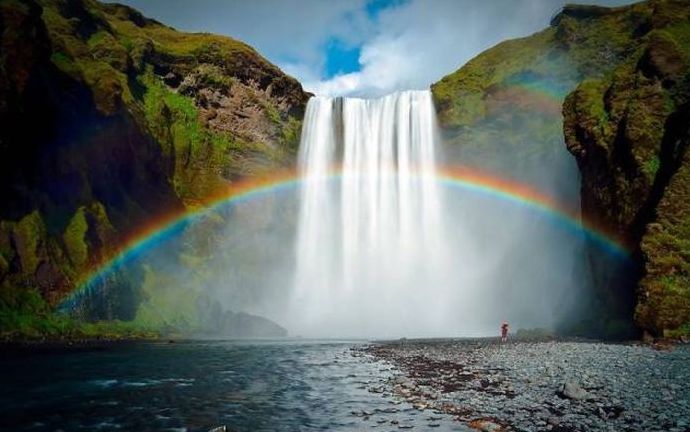|
|
Iceland
|
Biodiversity
There are around 1,300 known species of insects in Iceland, which is low compared with other countries (over one million species have been described worldwide). The only native land mammal when humans arrived was the Arctic fox, which came to the island at the end of the ice age, walking over the frozen sea. On rare occasions, bats have been carried to the island with the winds, but they are not able to breed there. Polar bears occasionally come over from Greenland, but they are just visitors, and no Icelandic populations exist. There are no native or free-living reptiles or amphibians on the island.
Phytogeographically, Iceland belongs to the Arctic province of the Circumboreal Region within the Boreal Kingdom. Approximately three quarters of the island are barren of vegetation; plant life consists mainly of grassland, which is regularly grazed by livestock. The most common tree native to Iceland is the northern birch (Betula pubescens), which formerly formed forests over much of Iceland, along with aspens (Populus tremula), rowans (Sorbus aucuparia), common junipers (Juniperus communis) and other smaller trees, mainly willows.
When the island was first settled, it was extensively forested. In the late 12th century, Ari the Wise described it in the Íslendingabók as "forested from mountain to sea shore". Permanent human settlement greatly disturbed the isolated ecosystem of thin, volcanic soils and limited species diversity. The forests were heavily exploited over the centuries for firewood and timber. Deforestation, climatic deterioration during the Little Ice Age and overgrazing by sheep imported by settlers caused a loss of critical topsoil due to erosion. Today, many farms have been abandoned. Three quarters of Iceland's 100,000 square kilometres are affected by soil erosion, 18,000 km2 (6,900 sq mi) so seriously as to be useless. Only a few small birch stands now exist in isolated reserves. The planting of new forests has increased the number of trees, but the result does not compare to the original forests. Some of the planted forests include introduced species. The tallest tree in Iceland is a sitka spruce planted in 1949 in Kirkjubæjarklaustur; it was measured at 25.2 metres (83 ft) in 2013.
|
|









